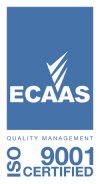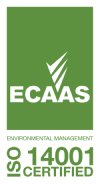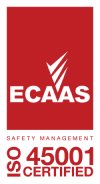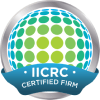Experts In All Facets Of Sewage Overflow Clean Up and Restoration Across Melbourne
 We are experts in sewage and septic backup, spills and overflow cleaning and restoration, with a team that has combined experience of over 40 years in sewage overflow cleaning and water damage restoration across Melbourne. Our team is certified by the Institute of Inspection, Cleaning and Restoration and we follow their global standards in all the sewage cleaning and restoration programs we undertake.
We are experts in sewage and septic backup, spills and overflow cleaning and restoration, with a team that has combined experience of over 40 years in sewage overflow cleaning and water damage restoration across Melbourne. Our team is certified by the Institute of Inspection, Cleaning and Restoration and we follow their global standards in all the sewage cleaning and restoration programs we undertake.
We manage the clean-up and sanitation programs for all sewage overflow issues; ranging from toilet back flow issues, sewage pipe leaks, sewage pipe bursts, sewage mains backflow, septic pipe overflow and clogged drains. Our expert Water Damage Restoration Technicians are skilled in cleaning up sewage contamination inside your building but also under the subfloor and crawl spaces, where pipe leaks and bursts tend to cause the overflow issues.
24×7 Rapid Response Service For all Sewage Overflow Cleaning Emergencies Across Melbourne and Regional Victoria
From our perspective, sewage overflow is a critical emergency and we respond with our 24×7 emergency relief service; where a qualified Water Damage Restoration Technician will aim to commence the assessment, make safe and start sewage overflow clean-up program within one hour from your call across any part of Melbourne.
Take Caution Around Sewage Overflow! It can be dangerous to your health.
At Capital Restoration we know that sewage overflow represents black water that is contaminated and unsanitary. Sewage overflow spreads quickly and contaminates all surfaces and materials it touches. It can be extremely dangerous to the health of you and your family. Sewage overflow is infested with bacterial, pathogen and mould hazards. Make sure you do not enter confined spaces of sewage build up without the appropriate safety gear as exposure could be toxic and dangerous to your health.
What we do to quickly remove the dangers of sewage overflow;
- Sewage Overflow Assessment | Our first step is to always assess the damage and use our specialised instruments and monitors to map out the extent of the damage.
- Define Scope Of Works | We carefully plan how to reduce or stop the overflow, as well as the sanitisation, drying and restoration program that will be required to address it. We can provide detailed assessments and restoration outlines to your insurance company to support any claims. At this stage we can provide fairly accurate outlines of estimated costs and the time required for the different phases in the restoration program.
- Water Extraction | We use specialised water extraction equipment to extract the sewage overflow from the inside of your building, beneath the subfloor, in cavities or in outdoor spaces.
- Controlling Bacteria Contamination, Water Damage Odour and Control Of Air Quality | We use environmentally friendly antimicrobial treatment to disinfect, sanitise, control and reduce the spread of bacteria to the contaminated and adjoining surfaces, protecting against secondary problems of mould and mildew. We use treatments to kill wet odours and where there is high risk of reduced air quality we use Air Filtration Devices to reduce discomfort from reduced air quality.
- Dry, Repair and Dispose Program | We strongly recommend to our clients that materials exposed to waste water that can not be thoroughly cleaned or disinfected be disposed. We can organise this for you. Carpet, upholstered furniture, curtains and paper damaged by sewage overflow, has been affected by black water contamination, and in most cases is not deemed to be salvageable. If there is significant overflow it may damage walls and wall insulation, we can conduct an assessment and recommend if these should be replaced to avoid indoor mould issues. Hard surfaces such as paving and concrete can generally be cleaned and disinfected without the need to be replaced.
- Structural Restoration | Our certified Water Damage Restoration Technicians are skilled to manage restoration programs end to end. From demolition work, through to the removal and relaying of floor boards. We can organise for structures to be rebuilt, replastering and painting. We repair water damaged roofs and ceilings and provide solutions for water ingress issues. We have a network of processional trades that understand water damage and how to best manage repair or constriction.
- Ongoing Monitoring | We monitor the restoration program from drying right through to cleaning, repairs, rebuild and handover, and make alterations as required according to our findings on each monitoring visit. We keep our clients informed on our progress and report any issues upfront with a detailed plan on how these will be managed.
- Reporting | We are able to provide final reports of work undertaken and the justification behind actions taken. This reporting assists with insurance claims and lends itself to a quicker and smoother settlement process. We are happy to work with assessors and loss adjusters and understand their requirements.
What to do before we arrive;
- Do not enter confined spaces contaminated with sewage overflow and waste water without the appropriate safely gear. Do not touch any sewage contaminated surfaces or materials. Coming into contact with sewage waste can have a hazardous effect on your health, as you are exposing yourself to bacterial, pathogenic, respiratory and infection hazards.
- If the sewage or waste water overflow is the result of a burst pipe, turn off the water supply.
- Switch off electricity in affected areas to avoid electrocution
- Have an expert plumber assess the cause of the overflow (or we can organise this for you!). It is important to identify and repair the underlying problem that caused the sewage overflow, spill or back up.
- Open all windows and doors to increase ventilation in the sewage contaminated area and to reduce humidity in the contaminated area this could help to slow the growth of bacteria and mould.
- Do not run central heating and cooling in sewage contaminated areas as contamination may spread through the system and spread the risk of mould across your building
- Do not move contaminated materials into clean areas in your home, this will simply cause the spread of contamination and will increase your restoration bill! Move contaminated material outdoors to a concrete or tiled surface not on exposed soil, grass etc.
- Notify your insurance company that there has been a sewage spill in your building









